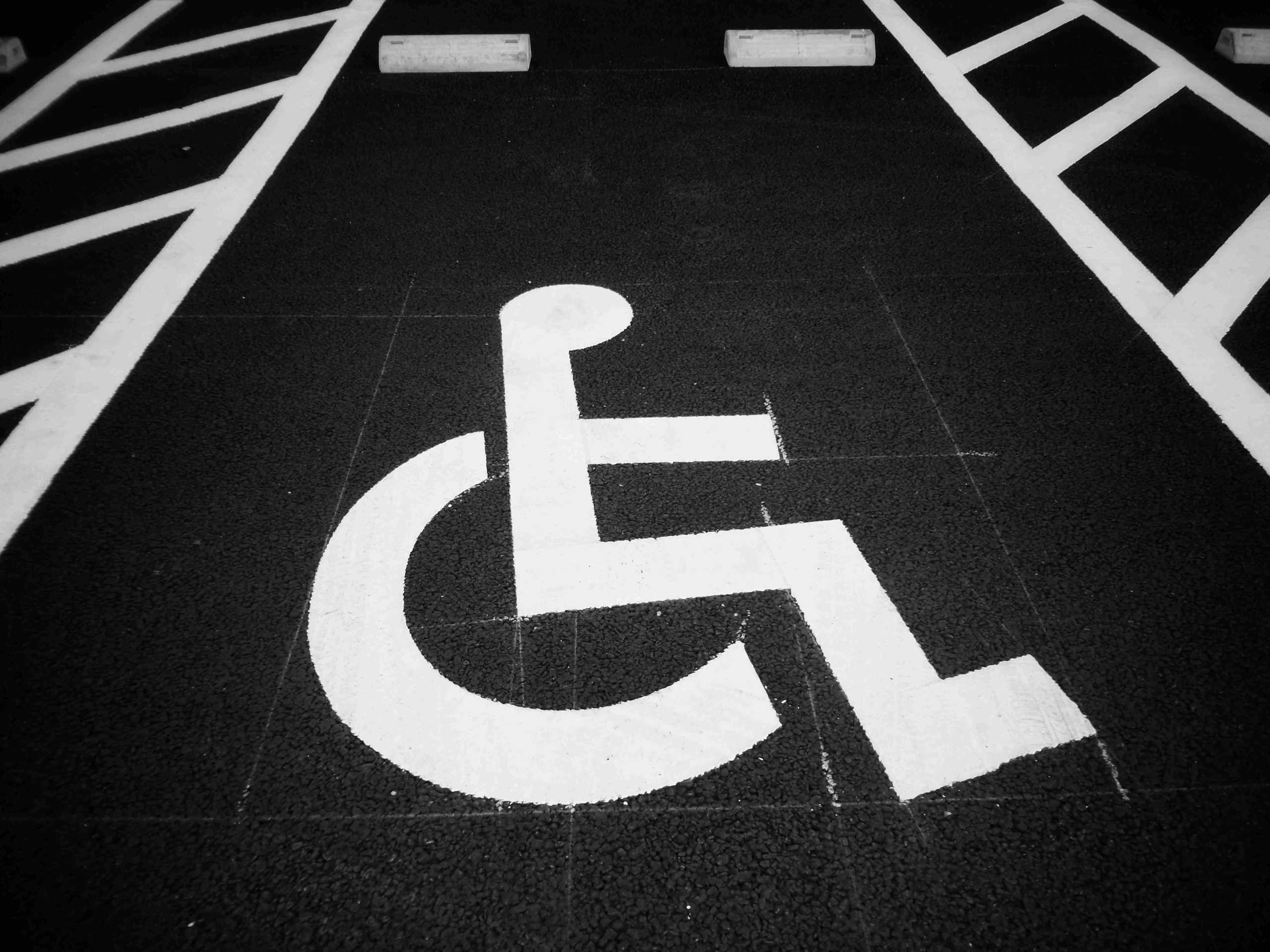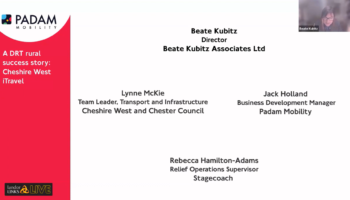Since the founding of Padam Mobility in 2014, our ambition has been to provide mobility services accessible to all, especially to people who do not have a wide range of choices available to them or who rely on outside assistance to be mobile.
We try to develop and design software components and features in such a way that they support people with limited or reduced mobility (PRM) as best as possible on their everyday journeys. For example, by being able to specify special aids, such as a wheelchair, automatically when booking a ride, or by making door-to-door bookings possible.
This summer, we wanted to find out more and therefore asked a number of people for their personal opinion. This yielded very interesting and insightful answers from a total of 48 different people in two of our main markets: France (F) and Germany (G). Most of these people (97.1% F; 84.6% G) are themselves affected by reduced mobility, others (2.9% F; 7.7% G) are involved in this issue in a professional context or are related to a person with reduced mobility (7.7% G).
The survey
The survey was conducted online between May and July in France and between June and August in Germany. Participants were recruited in a similar way. We contacted associations representing people with disabilities, dedicated Facebook groups and online platforms, and approached individuals from our private circle. The questionnaires were filled out online and anonymously.
The respondents
Most of the participants, both in France and in Germany, were between 25 and 49 years old (47.1% F; 50% G). It is noticeable that, especially in France, many people had no job or were househusbands/housewives (38.2%). In Germany, half of all respondents (50%) were in permanent employment, while 35.7% were already retired. Especially people who are no longer firmly integrated into working life, often have a hard time staying connected if they do not have an intact social environment. Suitable mobility solutions are an important component in this context that helps them to overcome the barrier of participating more actively in life.
However, the mere availability of public transport is often not sufficient. Most of the respondents have physical disabilities (85.3% F; 76, 9% G). Travelling by means of public transport is therefore often challenging. Lack of boarding aids or non-accessible infrastructure can turn journeys that are not a big deal for “non-impaired people” into a real challenge.
The spatial distribution of respondents is also interesting. In France, 41.2% of all respondents said they lived in a city with 100,000+ inhabitants (another 23.5% lived only about 20 kilometres from a city of this size). In Germany, the picture is similar, with 45.5% saying they live in a city of 100,000+, while 36.4% live 50 or more kilometres from a city of this size. This is a very interesting situation for the evaluation. Although it is not possible to determine which answer came from which participant, it is possible to deduce from the other statements whether certain conditions are clearly polarised, i.e. whether they are different in large cities and in rural areas, or whether the two areas are similar to each other.
Use of technology
As a software provider and, in particular, a manufacturer of user software, it was of course very important for us to find out how confident the respondents are in using a smartphone. Rides with our services can be booked via three different channels: Booking website, user app and via a call centre. Making these booking channels accessible and constantly improving them is one of our main concerns. Since we will return later in the questionnaire to the question of which technical aids our participants consider useful and which features they still miss, it is of great value that almost everyone among the respondents is familiar with the use of a smartphone (97.1 % F; 92.9 % G).
Mobility behaviour
We tried to find out more about the reasons why respondents are mostly on the move in everyday life. The most frequent answers in this respect in France were administrative appointments, doctor’s visits, etc. (76.5 %) and general shopping (79.4 %), while in Germany most respondents said they were visiting friends and family (84.6%) or pursuing leisure activities (76.9%). It is interesting to note that in the context of this survey, mobility is particularly associated with everyday leisure activities, lesser with e.g. commuting or tourism. This is an important sign that public transport, especially in rural areas, should not concentrate too much on school and work transport; people should also be given the opportunity to easily get from A to B flexibly during off-peak times.
Accompaniment of paratransit users
For people who are dependent on assistance for a variety of reasons, especially when travelling, it is important to ensure that this assistance is provided. We firmly believe that technical solutions can also help simplify processes of, for example, declaring accompanying persons, so that, for example, a person can be taken along free of charge with ease. We, therefore, wanted to know from the participants of our questionnaire what their habits are regarding “accompanied travelling”. Are they being accompanied? If so, how often? And are there any aspects that could be improved?
The answers revealed that professional help, such as caregivers, is rarely used and that in both France (70%) and Germany (48.9%), most people in need of assistance are accompanied by people they trust, family members or friends.
The choice of transport
The fact that in our survey most people with reduced mobility are not accompanied by professional assistants is of course also related to the choice of transport. Specialised paratransit services are rarely used in both countries. Among all respondents, only 5% of the respondents in France stated that they used paratransit services, compared to 21.43% in Germany. These figures are striking, as the number of those who need special equipment on their rides, such as a wheelchair, is rather high (55.9% F; 57.14% G).
Many of the respondents prefer to resort to their own car, whether specially adapted to their disability or not. With regard to generally available public transport, individuals stated that “public transport and trains are not acceptable for a wheelchair user”. Accessibility also ranked high for other people who used the free text fields to give personal opinions.
Another important point is the issue of “independence” and “offer”. A rather patchy offer, no planning security, etc. makes it difficult for the respondents to do without their individual car:
“The car can be used individually“
“You are more spontaneous than with public transport”
“[The car] is the fastest and most flexible“
“Because we are more independent with the car (we used to take the train more often in the past)”
Others, in turn, spoke in favour of public transport and explained why they did not use a dedicated paratransit service as follows:
“Public transportation is more convenient than calling an adapted transportation which you have to book a day or more in advance depending on the city”
“You have to plan a trip in advance“
“Constraining schedules, high costs”
“They ask you to book the services at least 48 hours in advance“.
Spontaneity, flexibility and ease of use, for example, are attributes that tend to be ascribed to the private car and were mentioned remarkably often. If transport services for PRM become similarly easy to use, and if it is ensured that the required equipment can be taken along without any problems, or if availability is generally enhanced, this will be major steps towards offering PRM a similarly comfortable experience with on-demand transport as people without constraints can enjoy.
Expectations on paratransit service
Although most of the participants do not use paratransit services, they still have a lot of expectations about how to improve them. Here are the most important demands at a glance:
1) Being able to book a ride in real-time
2) A better-equipped fleet
3) A better overall service offer
4) Better connection with other existing transport services, including non-disabled transport services
5) Improved booking interfaces and passenger information
Expectations on digital tools
A concern of ours is to closely examine the technical tools that paratransit users have at their disposal or which they still lack. In the questionnaire, we, therefore, asked what expectations Paratransit users have regarding digital features. The most frequently mentioned answers are listed below:
1) Information about the trip in advance and in real-time
2) Possibility to contact the driver directly
3) Information on the accessibility of public places near the itinerary
4) Having the possibility to rate, comment on the service and consult other users’ comments
Summary
Mobility is a basic need of all people, which, in a well-functioning society, should be made available to everyone in the best possible way. However, PRMs experience difficulties. From non-accessible vehicles to non-adapted digital tools, stumbling blocks lurk in many places and can significantly limit the user experience. This can reach the point where PRMs stop relying on transport services entirely, preferring to use an individual vehicle whenever possible.
A particularly common complaint has been that paratransit services often have to be booked well in advance, making it impossible to go on spontaneous trips. In terms of technology, the provision of real-time information is still lacking. Indeed, nothing is more unsettling than having to wait significantly longer than indicated for the vehicle to arrive.
Of course, due to the heterogeneity of our respondents, especially with regard to their place of residence, it is not possible to give specific tips for certain areas. However, the expressed dissatisfaction among the participants shows that there is room for improvement.
At Padam Mobility, we offer consultations and simulations for such purposes, which facilitate decision-making on a wide range of resource deployments. In this way, and by working closely with the people concerned, we can gradually make it possible to provide mobility services and technical features that make a real difference to PRMs.
This article might also interest you: Accessibility – How barrier-free is Public Transport in the UK?
Click here to find out more about Padam Mobility





